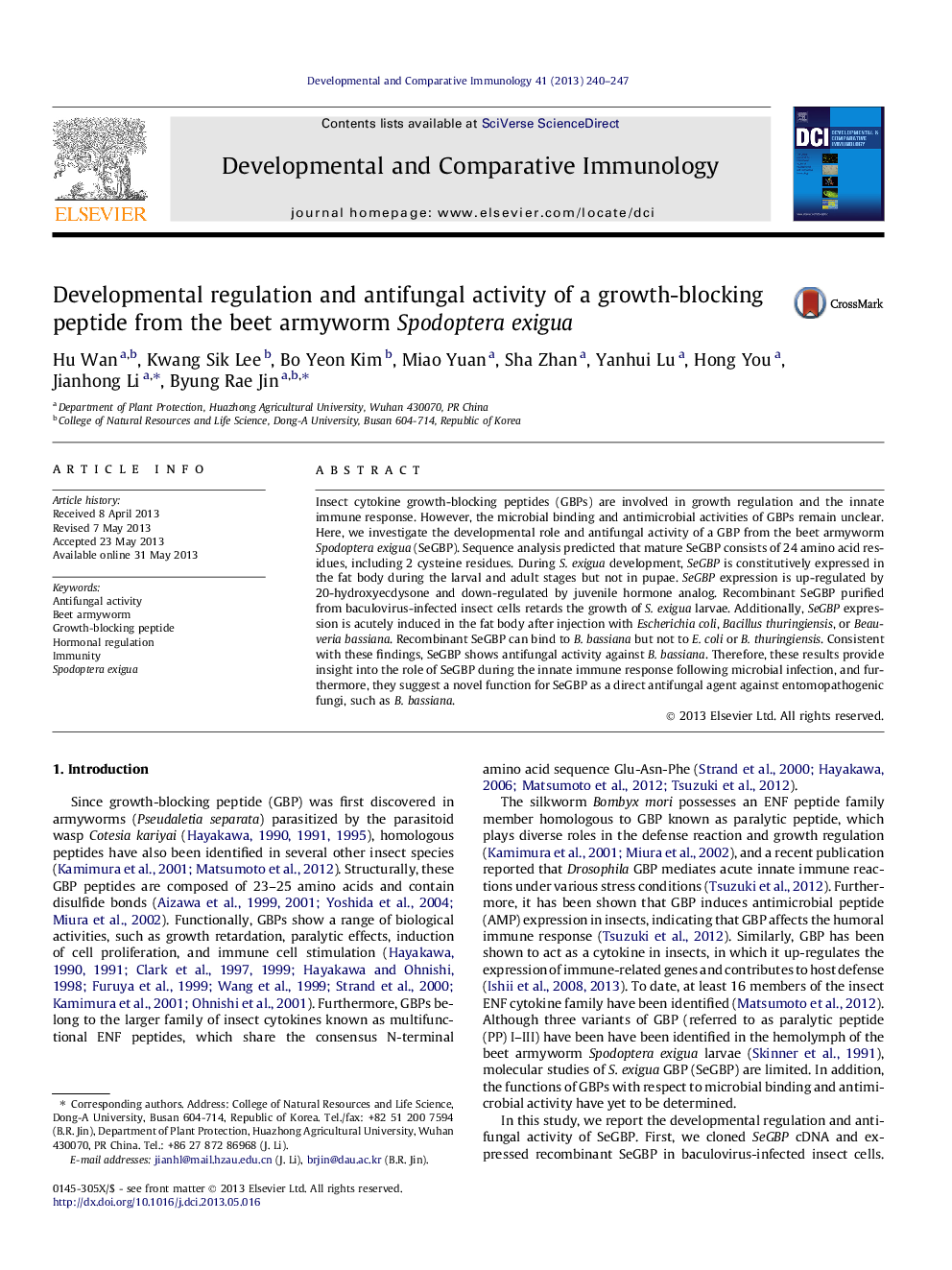| Article ID | Journal | Published Year | Pages | File Type |
|---|---|---|---|---|
| 2429231 | Developmental & Comparative Immunology | 2013 | 8 Pages |
•Spodoptera exigua growth-blocking peptide (SeGBP) consists of 24 amino acids.•SeGBP retards the larval development of the beet armyworm Spodoptera exigua.•SeGBP expression is up-regulated by 20E and down-regulated by JHA.•SeGBP expression is induced by bacterial and fungal infection.•SeGBP shows binding and antifungal activity against Beauveria bassiana.
Insect cytokine growth-blocking peptides (GBPs) are involved in growth regulation and the innate immune response. However, the microbial binding and antimicrobial activities of GBPs remain unclear. Here, we investigate the developmental role and antifungal activity of a GBP from the beet armyworm Spodoptera exigua (SeGBP). Sequence analysis predicted that mature SeGBP consists of 24 amino acid residues, including 2 cysteine residues. During S. exigua development, SeGBP is constitutively expressed in the fat body during the larval and adult stages but not in pupae. SeGBP expression is up-regulated by 20-hydroxyecdysone and down-regulated by juvenile hormone analog. Recombinant SeGBP purified from baculovirus-infected insect cells retards the growth of S. exigua larvae. Additionally, SeGBP expression is acutely induced in the fat body after injection with Escherichia coli, Bacillus thuringiensis, or Beauveria bassiana. Recombinant SeGBP can bind to B. bassiana but not to E. coli or B. thuringiensis. Consistent with these findings, SeGBP shows antifungal activity against B. bassiana. Therefore, these results provide insight into the role of SeGBP during the innate immune response following microbial infection, and furthermore, they suggest a novel function for SeGBP as a direct antifungal agent against entomopathogenic fungi, such as B. bassiana.
